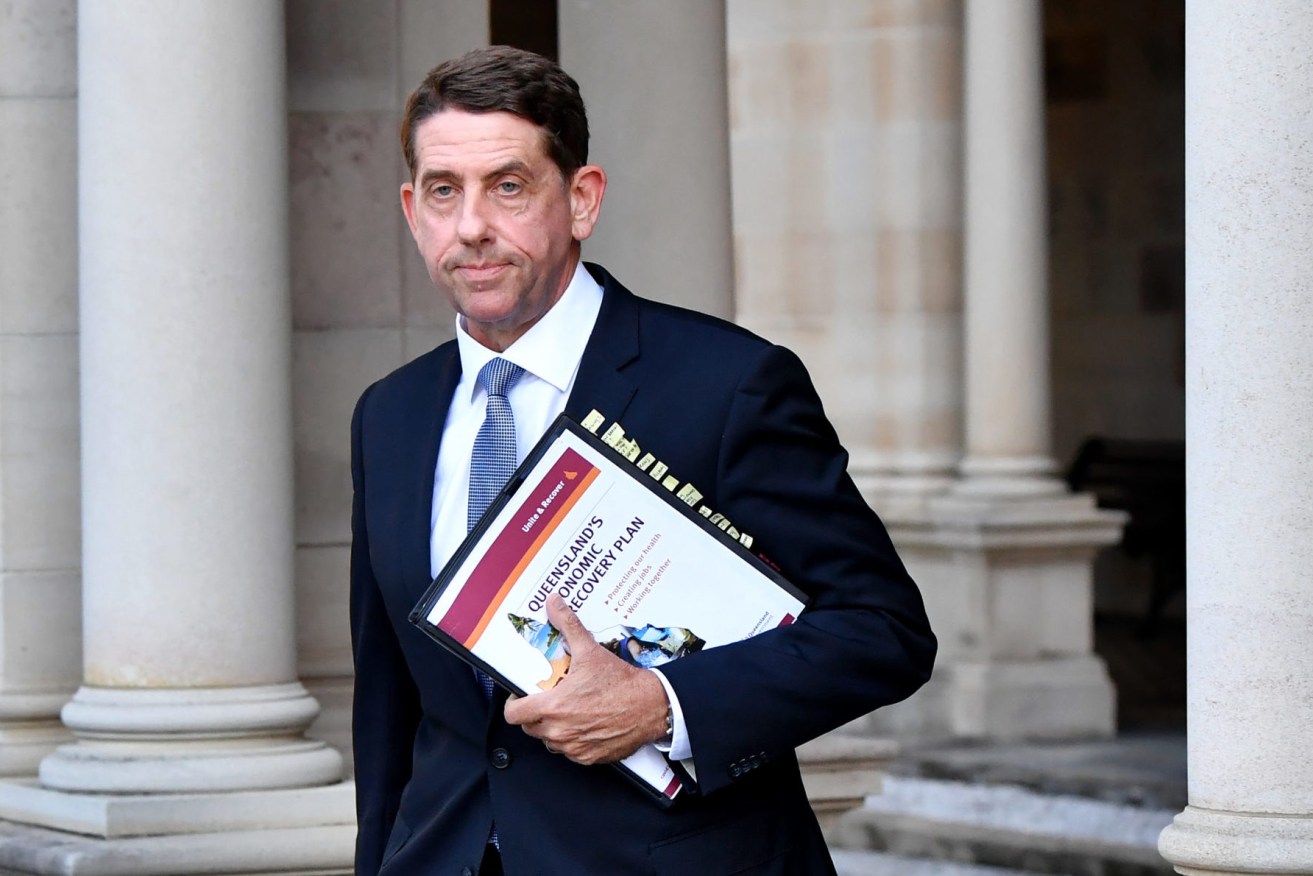Budget might mean a golden handshake for long-time Queensland public servants
Voluntary redundancy agreements are a sensitive subject but they could be the answer for Treasurer Cameron Dick as he prepares the next state budget, writes Robert MacDonald.


Treasurer Cameron Dick has delivered his mid-year Budget forecast. (Photo: AAP Image/Darren England)
Long-serving Queensland public servants looking for a change of scenery could be the big winners in the next state budget, due within 100 days.
Voluntary redundancies will surely have to be on the cards if Treasurer Cameron Dick is serious about restoring the state’s finances to some semblance of good health.
It’s a sensitive subject, thanks to the Newman administration’s use of voluntary redundancy agreements as a blunt weapon to remove 14,000 public servants – a strategy that contributed to the LNP’s loss of government after just one term.
But Dick has few other choices.
He can’t keep borrowing forever to cover the growing gap between the government’s revenue and its expenses.
It was a challenge even before COVID-19.
Here’s what the Auditor-General, Brendan Worrall, said in his annual review of state finances for 2018-19: “Unless the Queensland Government can increase its revenue or constrain the recent growth in its expenses, it risks not being able to meet the costs of its activities from the revenue it earns going forward.”
The pandemic has amplified the problem dramatically.
Pre-COVID-19, the state had budgeted to earn around $63 billion this financial year.
The figure is now likely to be around $56 billion – a 12 per cent drop – according to Dick’s pre-election fiscal and economic review, released in early September.
“The materially weaker outlook for domestic economic activity, labour market outcomes and exports also has direct impacts on the State’s revenue base, leading to substantial downgrades to state taxation, royalties and GST revenue across the forecast period,” the review says.
And while revenue falls, expenses soar, thanks to the Government’s $7 billion pandemic economic rescue package.
As a result, what was supposed to be a $600 million net operating surplus this year has turned into an $8 billion deficit.
The Government’s immediate response has been to increase borrowings, to more than $100 billion in 2020-21, defensible in the short term and at a time of historically low borrowing costs.
But sooner, rather than later, it has to manage two things well – cut costs as the first step to reducing public debt and boost revenues by encouraging economic growth.
Boosting economic growth is a long-term proposition and dependent on many factors beyond the State Government’s control – global economic demand and the course of the pandemic among them.
Which makes cost-cutting the obvious priority.
Dick has already promised to find $3 billion in savings over the next four years with a variety of measures, which you could sum up as harvesting low-hanging fruit – printing annual reports in black and white, postponing IT projects and cutting back on advertising.
To make a real dent on expenses, Dick is going to have to address the state’s $30 billion of employment costs – around half of the state’s pre-pandemic expenses.
Which gets us to voluntary redundancy agreements.
The pre-election Labor Government avoided the phrase altogether, preferring to highlight the savings that can be achieved through natural attrition.
Dick recently hailed the fact that the Government had saved $2.6 million as a result of losing 13 senior executive positions through natural attrition.
Which raises two questions; what were these executives doing that is now not so essential? And imagine the extra savings you could make by encouraging others doing presumably non-essential work, to leave.
The State Government already has a voluntary redundancy package in place, which pays up to a year’s salary and an incentive payment of $6,500 for departing staff.
But it’s rarely used and can only be offered if another vacancy can’t be found for the person whose job has been made redundant.
However, you’d have to assume that by now, nearly 10 years after the last round of voluntary redundancy offerings, there’d be plenty of long-serving public servants ready to take the money.
The challenge will be making sure that the offers are truly voluntary and the positions being vacated are truly non-essential.












